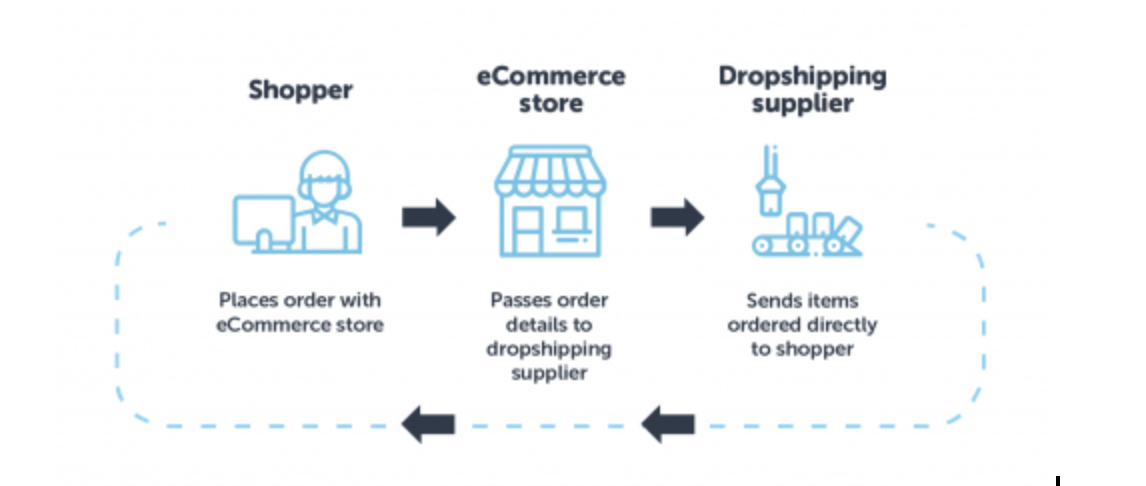

Selling on eBay can be a great way to make money, but finding the right products to sell is key to your success.
Whether you’re just starting out or already have some experience, sourcing products the right way can save you time, increase your profits, and help your eBay store stand out.
The good news is that there are many ways to source products for your eBay business, from working with wholesalers to dropshipping.
Each method offers its own benefits, depending on your budget, goals, and the amount of time you can commit.
In this guide, we’ll explore the best ways to source products to sell on eBay, so you can make informed decisions and start building your online business with confidence.


Source: Pexels
Dropshipping is a business model many eBay sellers use that enables them to run their business without having to worry about inventory.
This works by the use of a dropshipping supplier who, once you sell a product, will ship the product to your customer.
The difference between a dropshipping supplier and a fulfillment center is that the dropshipping supplier also takes care of managing inventory levels from the source. Sometimes, if they create their products, they are the source.
Other times, they’ll purchase the products in bulk from larger companies and sell them to you at a discount. Your job as the seller is to price the products at a price greater than what they sell them to you for.
This is similar to affiliate marketing, except you have control over the pricing and sale of the products. The advantage of using dropshipping is that you never have to worry about inventory.
If this method of product sourcing sounds interesting to you, suppliers like SaleHoo, ChinaBrands, or Doba might be interested.
Many eBay sellers leverage the inventory of other retailers to fulfill their orders. There are two ways eBay sellers do this:
Retail arbitrage is a business model where you find a product selling at another retailer for less than the market price on eBay.
First, you list the product on eBay. Once an order is placed, you purchase the product at the other retailer and have it shipped to your customer.
This can be done with physical retail stores like Target or Wal-Mart by purchasing clearance products. Still, if you really want to scale your business, you can leverage platforms like Amazon or AliExpress for this business model.
There’s even software out there, like SaleFreaks or DSMTool, that help automate this business if you decide to operate it online.
The only problem with this business model is that the margins are very slim. Because of this, you’ll need to make up for these small margins by listing lots of products.
If you want to start a retail arbitrage business, check out this helpful infographic from amazing.com.
Source: Pexels
Many eBay sellers operate by finding deals at garage sales and thrift shops, then listing these products for sale on eBay.
This business model doesn’t scale well unless you can hire a fleet of buyers to find products at thrift stores, but if you want to operate in this way, make sure you know what sort of products you’re looking for before you look for deals
You need to make sure you purchase products you know will sell. eBay analytics tools can help you do keyword research in advance so that you can make educated decisions instead of going at it blind.
If this sounds like your preferred method of sourcing products from eBay, check out this chart from Practical Cash that lists the 50 easiest things to flip for a profit.
Retail arbitrage involves purchasing discounted or clearance items from physical retail stores like Walmart, Target, or local outlets and reselling them on eBay for a profit.
This method works well because in-store deals often aren’t listed online, giving you an edge. It’s a hands-on way to find new, branded products at reduced prices.
With minimal upfront investment, it’s ideal for beginners who want to get started quickly by flipping everyday items.
Source: Pexels
Private labeling involves sourcing generic products (usually from Alibaba), branding them with your own logo and packaging, and selling them as your own on eBay.
This method allows for greater control over branding and pricing, which can lead to higher margins.
While it requires upfront investment in product design and marketing, it’s ideal for sellers looking to build a long-term, recognizable brand.
Liquidation websites like Liquidation.com, B-Stock, or Direct Liquidation sell surplus, customer returns, and overstock from big retailers at major discounts.
You can buy pallets of mixed goods and resell them on eBay. While there’s risk involved—some items may be unsellable—it’s a cost-effective way to source name-brand products in bulk.
This is best for sellers who have storage space and are okay with sorting through varied inventory.
Local classifieds and marketplaces are full of opportunities to buy second-hand items at low prices from people who just want to declutter.
You can negotiate directly and often get items for free or very cheap. Many sellers undervalue items, especially electronics, furniture, or collectibles.
After a quick cleanup or better listing, you can flip them on eBay for a solid margin. This is great for sellers who like face-to-face deals and local pickups.
Source: Pexels
Sometimes, the best deals are right on eBay itself.
“Sniping” involves bidding on or buying underpriced listings—often those with poor photos, bad titles, or auctions ending at odd hours—and then relisting them with improved presentation.
This method requires a good eye for undervalued products, knowledge of eBay trends, and fast turnaround. It’s a clever, low-cost way to turn eBay into both your source and your selling platform.
Quick Links:
Finding the best products to sell on eBay is one of the most important steps in building a successful eBay business.
From working with wholesale suppliers to exploring local markets and dropshipping, there are a variety of ways to source products that fit your niche and meet customer demand.
Each method has its own advantages and challenges, but with the right approach and some research, you can find high-quality products that will help you build a profitable eBay store.
By using the sourcing strategies we’ve outlined, you’ll be in a stronger position to make smart decisions, boost your sales, and grow your eBay business.
Take your time, explore your options, and choose the best sourcing method to fit your unique goals and resources.
HostArmada is a solid choice for budget-friendly, fast, and secure web hosting. With cloud-based infrastructure,…
In this article, I will present you a step-by-step guide on How to create…
Choosing the right hosting plan can be tricky, but I recently explored Cloudways Pricing Plans,…
Do you want to take control of your web hosting and explore different options? I…
In this article, we will compare Rackspace vs ScalaHosting, offering detailed insights to help you…
OVERALL VERDICT ScalaHosting is a web hosting provider known for its high-performance hosting solutions, offering…